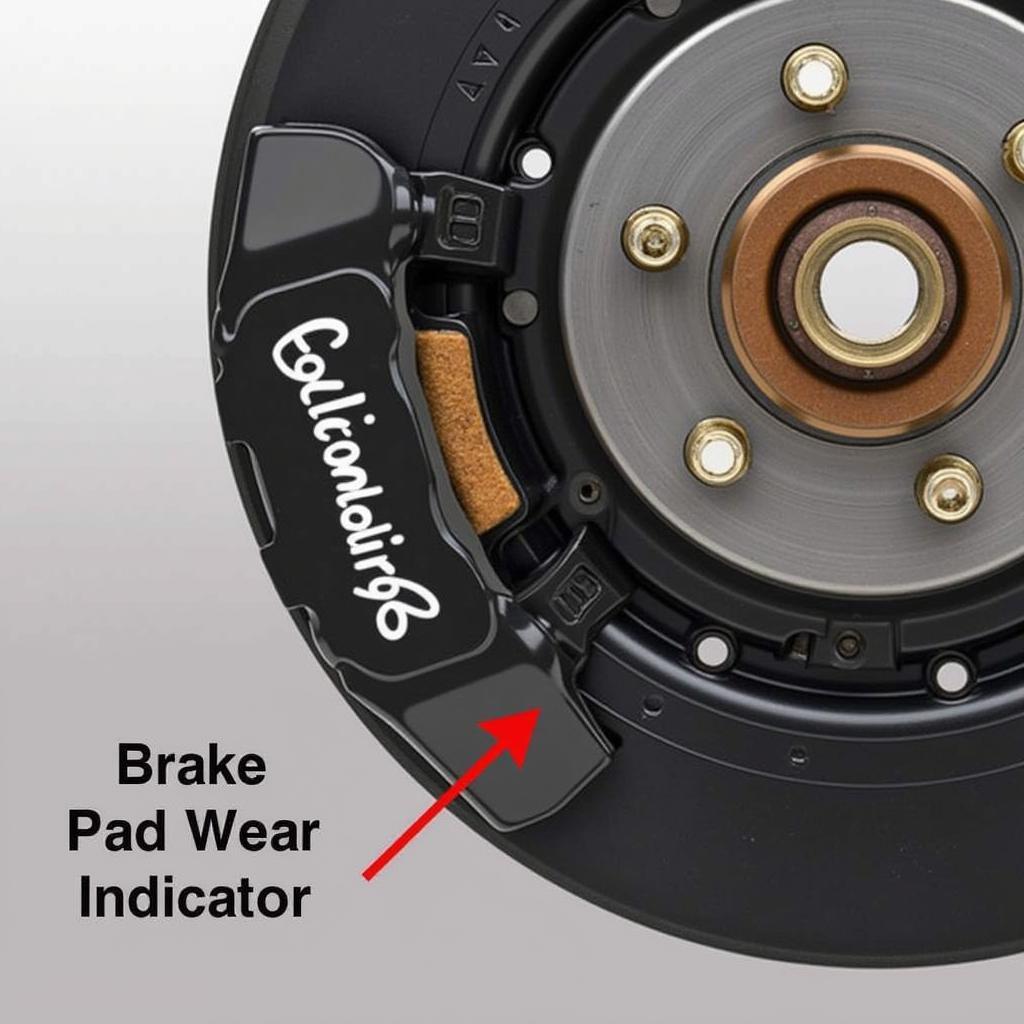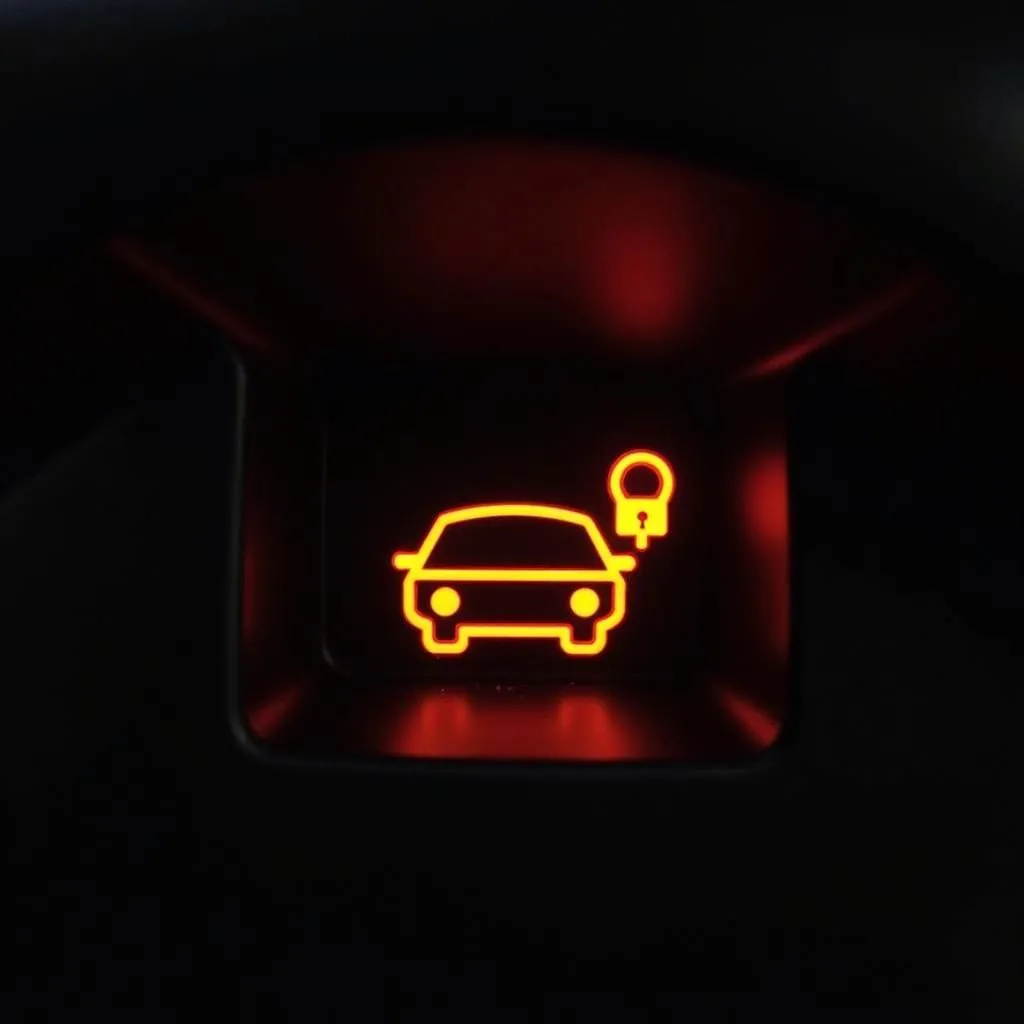The brake warning light on your 1994 Buick Regal is a crucial safety feature designed to alert you of potential braking system issues. Ignoring this warning light can have serious consequences, potentially leading to reduced braking performance and unsafe driving conditions. This comprehensive guide will delve into the common causes of a lit brake warning light on a 1994 Buick Regal and provide you with practical solutions to troubleshoot and address the underlying problem.
Understanding the various components of your vehicle’s braking system and their potential failure points is essential for effective troubleshooting. While this guide offers valuable insights and solutions, consulting with a qualified mechanic is always recommended for a comprehensive diagnosis and repair, especially if you’re not comfortable working on your car’s braking system.
Common Causes of a Brake Warning Light
There are several reasons why the brake warning light on your 1994 Buick Regal might illuminate. Some of the most common causes include:
1. Low Brake Fluid Level
One of the most frequent culprits behind a lit brake warning light is a low brake fluid level. Brake fluid is the lifeblood of your car’s hydraulic braking system, responsible for transmitting the force from your foot on the brake pedal to the brake calipers, which then squeeze the brake pads against the rotors to slow down or stop the vehicle.
Over time, brake pads wear down, and the brake fluid level in the master cylinder reservoir naturally drops. However, if the fluid level drops significantly below the minimum mark, it could indicate a leak in the braking system, which requires immediate attention.
2. Worn Brake Pads
Brake pads are designed to wear down gradually with use. When they wear thin, the brake warning light on your dashboard will illuminate to alert you that it’s time for a replacement. Driving with worn-out brake pads not only diminishes braking efficiency but can also damage the rotors, leading to costly repairs.
3. Faulty Brake Caliper
The brake calipers house the pistons that push the brake pads against the rotors. A sticking or seized caliper piston can cause the brake pads to constantly rub against the rotor, leading to premature pad wear, overheating, and reduced braking performance.
4. Malfunctioning ABS System
Modern vehicles, including the 1994 Buick Regal, are equipped with an Anti-lock Braking System (ABS). The ABS prevents the wheels from locking up during hard braking, improving vehicle stability and control.
A malfunctioning ABS module or a faulty wheel speed sensor can trigger the brake warning light. In some cases, the ABS warning light might also illuminate alongside the brake warning light.
5. Issues with the Brake Master Cylinder
The brake master cylinder is a vital component of the hydraulic braking system. It converts the force applied to the brake pedal into hydraulic pressure, which is then transmitted to the brake calipers. A leaking or internally damaged master cylinder can cause a drop in brake fluid pressure, leading to a soft or spongy brake pedal and illuminating the brake warning light.
Troubleshooting a Brake Warning Light
Important: If you’re not comfortable working on your vehicle’s braking system, it’s always best to consult a qualified mechanic for a comprehensive diagnosis and repair.
Here are some steps you can take to troubleshoot the brake warning light on your 1994 Buick Regal:
-
Check the Brake Fluid Level: This is the first and easiest step. Locate the brake fluid reservoir (refer to your owner’s manual if needed) and check the fluid level. If it’s low, add the recommended brake fluid (DOT 3 for most 1994 Buick Regal models) to the “Max” line. If the light remains on after topping off the fluid, or if you need to add fluid frequently, it’s likely a sign of a leak in the braking system, which requires immediate professional attention.
-
Inspect the Brake Pads: Jack up your car and support it securely on jack stands. Remove the wheels to access the brake pads. If the pads are worn thin (less than 1/4 inch of friction material remaining), it’s time to replace them.
-
Examine the Brake Lines and Hoses: Carefully inspect all the brake lines and hoses for any signs of leaks, cracks, or damage. Pay close attention to areas where the lines and hoses connect to other components. If you find any leaks or damage, replace the affected lines or hoses immediately.
When to Consult a Mechanic
While some brake warning light issues can be addressed with basic troubleshooting, it’s crucial to seek professional assistance in the following scenarios:
- You’re uncomfortable or unfamiliar with working on your vehicle’s braking system.
- You suspect a leak in the braking system.
- The brake warning light remains illuminated after checking the fluid level and inspecting the pads and lines.
- You experience a soft or spongy brake pedal, indicating a potential issue with the master cylinder or air in the brake lines.
- You hear unusual noises while braking, such as grinding or squealing.
Expert Insight: “Brakes are a critical safety system in any vehicle,” says John Smith, a seasoned automotive technician with over 20 years of experience. “Never ignore a brake warning light. Addressing the issue promptly can prevent more serious and costly problems down the line.”
Conclusion
The brake warning light on your 1994 Buick Regal is a vital safety feature that should never be ignored. By understanding the common causes and taking the necessary troubleshooting steps, you can address the underlying issue and ensure your vehicle’s braking system functions safely and efficiently.
Remember, if you encounter any difficulties or are unsure about any aspect of inspecting or repairing your brakes, always err on the side of caution and consult a qualified mechanic.
Frequently Asked Questions
1. How often should I check my brake fluid level?
It’s a good practice to check your brake fluid level at least once a month and more frequently if you notice any changes in your brake pedal feel or if the brake warning light illuminates.
2. Can I drive my car with the brake warning light on?
Driving with the brake warning light on is highly discouraged and potentially dangerous. The light indicates a potential issue with your braking system, which could compromise your ability to stop safely.
3. How long can I drive with worn brake pads?
It’s impossible to provide a definitive answer as brake pad wear depends on various factors, including driving habits and conditions. As a general rule, if your brake pads are worn down to 1/4 inch or less, it’s time for a replacement.
4. How much does it cost to replace a brake master cylinder?
The cost of replacing a brake master cylinder varies depending on the make and model of your vehicle and labor rates in your area. On average, you can expect to pay between $250 and $500 for parts and labor.
5. Can I add any type of brake fluid to my 1994 Buick Regal?
It’s essential to use the recommended brake fluid for your 1994 Buick Regal, typically DOT 3. Using the incorrect type of brake fluid can damage your braking system components.


